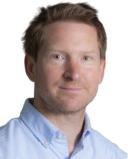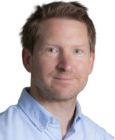Parapsychology
Parapsychology in Perspective
Get the real story behind the "other side" this Halloween.
Posted October 30, 2019
Early psychical research included spiritualist cults, mediums, ghost-hunters, mind-readers, and levitators of tables and mystics of all sorts. By the 1930s, excitement in the U.S. attracted the interest of some serious scholars and institutional support, and a newer and more sophisticated investigation of the paranormal proceeded. Various groups ran experiments on paranormal subjects, from precognition, remote viewing, and metal bending, to animal communication and energy field projection. Ghosts and extra-terrestrials were explored, as parapsychologists engaged with the military and with fringe groups. Amid Cold War tensions, the Soviet and the U.S. governments invested in efforts to develop “psychic spying.” The American program was tasked and funded by the Department of Defense as well as the CIA, DEA, NSA, NSC, as well as the Secret Service.

Parapsychology had a foundation in numerous intellectual traditions, research fields, and several institutions and organizations. But experiments by the botanist Joseph Rhine at Duke University are rightly regarded as the beginning of parapsychology’s rebranding as a science. By 1935, several years before the rise of cybernetics as an area of growth in science and around the time that sociology consolidated as a discipline, Rhine had coined the term extrasensory perception (ESP). A well-worn story is that Sir Arthur Conan Doyle turned Rhine onto parapsychology during a 1922 tour-de-force lecture in Prohibition-era Chicago.
After teaming up with his mentor, William McDougall, Rhine went on to establish himself as a parapsychological pioneer. He created forms of ESP, including telepathy (mind-to-mind communication without known physical means), clairvoyance (seeing things not present), precognition (knowing things before they happen) and psycho-kinesis (mind over matter). Rhine believed that by incontrovertibly establishing ESP as reality-based, and that it operated freely of the physical and mortal body, there might also be something about humans that could survive the death of the body. It was nothing less than a life-after-death thesis. Proving this – quantifying it – was another matter.

The "Rhine revolution" encompassed several elements. Rhine attempted to provide parapsychology with a systematic program of sound experimentation, to quantify the conditions and extent of psi phenomena rather than merely trying to prove their existence. In this way, he sought to give the field of parapsychology academic and scientific legitimacy. He used card-guessing and dice-rolling experiments, for example, all in an attempt to verify statistically – scientifically – that ESP existed. He wanted to prove that the mind had far fewer limits than we could imagine. Besides the Duke University Laboratory, he also founded the independent Rhine Research Center. Further, Rhine co-founded the Journal of Parapsychology in 1937 and then the Parapsychological Association in 1957, an association, its mission being, as stated in its Constitution, "to advance parapsychology as a science, to disseminate knowledge of the field, and to integrate the findings with those of other branches of science."
During the 1970s, an array of parapsychological organizations were formed, including the Academy of Parapsychology and Medicine (1970), the Institute of Parascience (1971), the Academy of Religion and Psychical Research, the Institute for Noetic Sciences (1973), and the International Kirlian Research Association (1975). Major American universities began running experiments throughout the decade. Duke, Princeton, Stanford, Virginia, among others, all embarked on mind-blowing research with cool-sounding names. Stanford’s secretive CIA-funded project was called Project Stargate, an effort to examine people from afar through "remote viewing." Over in New Jersey, the Princeton Engineering Anomalies Research (PEAR) project investigated extrasensory perception (ESP) and telekinesis (TK). The University of Virginia’s Division of Perceptual Studies, meanwhile, researched reincarnation and near-death experiences (NDEs), in addition to other altered states of consciousness, whereas Duke University’s Parapsychology Laboratory – the birthplace of modern parapsychology in the United States – was operating all manner of tests.
Under the direction of the famous cultural anthropologist Margaret Mead, the Parapsychological Association took a large step in advancing the field of parapsychology in 1969 when it became affiliated with the American Association for the Advancement of Science (AAAS), the largest general scientific society in the world. This link fostered even more credence to and general openness toward psychic and occult phenomena in the 1970s. While university research commenced, the influx of spiritual teachers from Asia, and their claims of abilities produced by meditation, led to research on altered states of consciousness. Parapsychologists used ganzfeld tests for measuring ESP ability, as one example. Ganzfeld exams sought to quantity telepathy by separating two individuals in isolated rooms, where one attempted to send a telepathic image to the other. Researchers found, too, that ESP abilities heightened under hypnosis. Since hypnosis typically involves relaxation and suggestion in a comfortable atmosphere, researchers suggest that perhaps one of these factors, or a combination thereof, may be responsible for heightened psi-scores.[1]
Uri Geller, an Israeli illusionist, proved an intriguing case study, and he served to divide the scientific community. He popularized paranormal activity during the mid-1970s with his claims of spoon-bending and telepathy. He was significant enough, and his supercharged mind sufficiently powerful, to prompt articles in Nature magazine, among others, and serve as a basis of study at Stanford. Considerable debate followed. The Stanford Research Institute was formed initially to conduct experiments for the military, but split from the university proper after student protests at the end of the 1960s. In 1972-1973, researchers worked with Geller to examine his reputed ability to bend metal and his ESP. The results were favorable to Geller, and they demonstrated the limitless power of the mind, but New Scientist was far from sympathetic. “The SRI paper simply does not stand up against the mass of circumstantial evidence that Uri Geller is simply a good magician.”[2]
More than this, lessons could be drawn about the American mind and science in the United States more generally. First, the potency of suggestibility was crucial in thinking about beliefs in the “paranormal.” Far too many individuals were caught up in the TV circus and newspaper headlines, and had lost perspective. Second, scientists were not nearly as “critical, skeptical, and observant” as they ought to have been. The standards of judgment and the responsibility of scientists appeared to be compromised during the episode. Third, the historical perspective mattered. Claims of clairvoyance and other powers about the mind have long histories, stretching backward into the late 19th century and beforehand.[3]

The swell in paranormal research continued throughout the 1970s and carried into the 1980s. It was reflected, too, in popular culture, with the author Stephen King, for example, establishing an empire based on paranormal activity. Telekinesis, telepathy, and the like featured in King-inspired films Carrie (1976), The Shining (1980), The Dead Zone (1983), and Firestarter (1984). But ghosts and ghouls, angels and the afterlife, were far more popular than just King properties. According to one account, the official forces of science and society – usually marked as sceptical and white males – no longer had the power to “battle evil.” The heroes of such new films, whether in The Exorcist (1973) or Ghostbusters (1984), had to struggle against these forces, or the Establishment, in addition to evil, paranormal, mind-controlling, Satanic bad guys.[4] Horror films, suggested the New York Times, entered a cycle of unparalleled carnage during the late-1960s and 1970s that has often been explained in the psychological terms, such as the family dynamics or the subconscious. Science fiction and paranormal trends also met in the 1970s, particularly at the cultural intersection of Close Encounters of the Third Kind (1978), a film that represented for many critics not only the genius of Steven Spielberg but also the New Age beliefs of the era. [5] The film also articulated the post-Watergate distrust of government. “In many ways, this movie is a cosmic Watergate,” Spielberg explained. “Hopefully people will experience something very much like a real U.F.O. experience.”[6]
By the end of the 1980s, the Parapsychological Association reported members working in more than 30 countries. Additionally, research not associated with the PA was conducted in Eastern Europe and the former Soviet Union. With the increase in parapsychological investigations, structured opposition also grew – to the findings of parapsychologists and the granting of any formal recognition of the field. This was not science, the detractors argued. This was hokum. Geller, with all his reputed powers, was a chiseler, while parapsychology was flim-flimmery.
The founding of the Committee for the Scientific Investigation of Claims of the Paranormal (CSICOP) in 1976, which was later renamed the Committee for Skeptical Inquiry (CSI), provided a forum for critics to push back against the rise of parapsychology. It was established April 30, 1976, at an international symposium at SUNY-Buffalo on the topic of “The New Irrationalisms: Antiscience and Pseudoscience.” “There has been an enormous increase in public interest in psychic phenomena, the occult, and pseudoscience,” wrote the co-founder of the organization, Paul Kurtz. “Radio, television, newspapers, books, and magazines are presenting the case of psychic healing, psychokinesis, immortality, reincarnation, Kirlian photography, orgone energy, psychic surgery, faith healing, astrology, the chariots of the gods, UFOs, dianetics, astral projection, exorcism, poltergeists, and the ‘talents’ of Uri Geller,” among others.
The aim of CSICOP was to examine these in detail.[7] Among the more prominent CSICOP Fellows were astronomer Carl Sagan, biophysicist Francis Crick, evolutionary scientist Stephen Jay Gould, and zoologist Richard Dawkins. Besides these academic heavyweights, the science writer Isaac Asimov and psychologist B.F. Skinner acted as fellows. At the founding of the organization, Kurtz, the editor of the Humanist magazine, spoke passionately on the scientific attitude versus antiscience and pseudoscience. He referred to “cults of unreason” and “nonsense” that inundated supposedly advanced societies like the United States. He made clear, though, that the organization would not cold-heartedly and reflexively reject all amazing claims. It wouldn’t automatically take the other side. Rather, the organization would seek to verify – to confirm – claims about metal bending or reincarnation.
Happy Halloween!
Drawn from Break On Through: Radical Psychiatry and the American Counterculture (The MIT Press, 2019).
References
[1] A. Gauld, A History of Hypnotism (Cambridge: Cambridge University Press, 1995); Richard Kammann, The Psychology of the Psychic (Prometheus Books, 2000): 137-187.
[2] Joseph Hanlon, “Uri Geller and Science,” The New Scientist 64, no.919 (1974): 170-190. Consulted in Papers of Arthur Koestler, Centre for Research Collections. University of Edinburgh. MS 2407.3.114-124
[3] Bernard Dixon, “Comment: Lessons of the Geller affair,” New Scientist 64, no.922 (1974): 379. Consulted in Papers of Arthur Koestler, Centre for Research Collections. University of Edinburgh. MS 2407.3.103
[4] David J Hess, Science in the New Age: The Paranormal, Its Defenders and Debunkers, and American Culture (Madison: University of Wisconsin Press, 1993) 122. See also, Shaila K. Dewan, “Do Horror Films Filter The Horrors of History?” New York Times, October 14, 2000.
[5] J. Hoberman, “‘Close Encounters’ Was When the Movies Got New-Age Religion,” New York Times August 31, 2017.
[6] Ibid.
[7] Gordon Stein (ed). The Encyclopedia of the Paranormal (Amherst, NY: Prometheus Books, 1996) 161-180.
[8] J McClenon, Deviant Science: The Case of Parapsychology (Philadelphia: University of Pennsylvania Press, 1986) and J. W. Monroe, Laboratories of Faith: Mesmerism, Spiritism, and Occultism in Modern France (Ithaca, NY: Cornell University Press, 2008).




